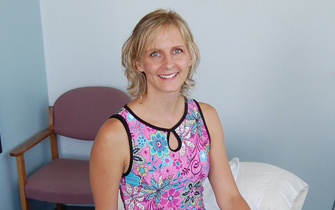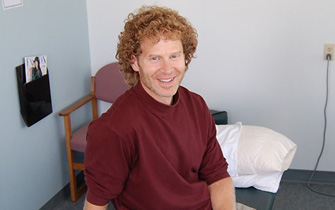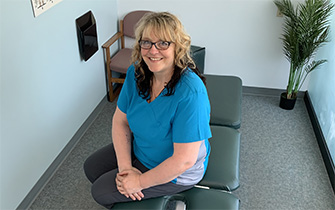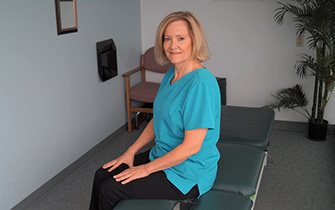Living with lower back pain or sciatica can feel like a never-ending battle. Every step, every movement can remind you of the discomfort. But here’s the good news: relief is within reach.

Physiotherapy offers a proven, drug-free way to reduce pain, improve movement, and prevent future issues. Our experienced team is here to guide you every step of the way.
Start your journey to relief — book your assessment today!
Understanding Sciatica and Lower Back Painry?
Sciatica occurs when the sciatic nerve becomes compressed or irritated, causing pain that can radiate from your lower back down to your buttocks, hips, legs and feet. This pain is often sharp or burning, making simple tasks like sitting or walking challenging.
Back pain, on the other hand, is a broad term that includes issues like muscle strain, herniated discs, or spinal conditions. Did you know up to 80% of adults experience back pain at some point in their lives?
Whether it’s sciatica or general back pain, our physiotherapy treatments are tailored to address your unique needs.
Symptoms of Sciatica
Recognizing the symptoms early can make a big difference in your recovery. Some of the common symptoms may include:
- Pain in the lower back
- Sharp or burning pain that radiates down the leg into the feet.
- Numbness or tingling in the lower extremities.
- Muscle weakness or spasms.
- Difficulty standing, sitting, or walking for longer periods.
- In severe cases, loss of bladder or bowel control (incontinence or difficulty urinating) – seek emergency care if this occurs.
Don’t wait until the pain gets worse. Early treatment can help you avoid long-term issues.
What’s Causing Your Sciatica and Lower Back Pain?
Understanding the root cause of your pain is the first step toward effective treatment. Common causes include:
- Herniated Discs: When the spongy disc between the vertebrae in the back pushes out and presses on a nerve. This injury is often caused by poor lifting techniques, lifting something too heavy, or repetitive bending.
- Spinal Stenosis: Is the narrowing of the tunnels where the nerves exit the spinal canal or the narrowing of the canal where the spinal cord resides. The narrowing of these tunnels puts pressure on the nerves. This is usually caused by significant disc degeneration or long standing arthritis in the joints of the lower back where bone spurs form and narrow the canals.
- Piriformis Syndrome: In a small portion of the population, the sciatic nerve travels through the piriformis muscle (in the buttock area), and when this muscle gets abnormally tight, it can compress the sciatic nerve.
Who Can Benefit from Physiotherapy for Sciatica?
Physiotherapy isn’t just for athletes or post-surgery patients—it’s for anyone looking to feel better and move better. Our treatment is ideal for you if:
- You experience persistent pain in your lower back, hips, legs, or feet.
- Daily activities like walking, bending, sitting, or sleeping are uncomfortable.
- You’re recovering from surgery or a recent injury.
- You prefer a natural, drug-free way to manage your pain.
Sound like you? Let’s work together to create a personalized plan for your recovery.
How Physiotherapy Help Treat Sciatica & Lower Back Pain
At Summit Physiotherapy, we focus on addressing the root cause of your sciatica and back pain to relieve discomfort, restore mobility, and prevent future issues. Here’s how we help:
Techniques we use:
- Manual Therapy: Hands-on techniques to relieve tension in the muscles and connective tissue and restore the mobility in your back, pelvis and hips.
- Exercise Programs: Tailored routines to strengthen your core and lower back, improve flexibility, and support your spine.
- Intramuscular Stimulation (IMS): Targets deep muscle tension and releases tight bands of muscle that may be compressing your sciatic nerve.
- Shockwave Therapy: Breaks down scar tissue and adhesions that may be contributing to your sciatica or chronic back pain, stimulating healing.
- Ultrasound Therapy: Uses sound waves to reduce inflammation in affected nerves and tissues, promoting faster recovery from pain
- Massage Therapy: Focused, hands-on techniques to release tension in muscles surrounding the sciatic nerve and lower back, improving blood flow and mobility.
- Acupuncture: Stimulates key acupuncture points to reduce nerve irritation and inflammation, alleviate pain, increase circulation and encourage relaxation.
- Spinal Traction: A machine that provides pain relief by stretching the lower spine and taking the pressure off the sciatic nerve.
- Pain Education: Learn to understand the mechanics of your pain, identify triggers, and adopt strategies to manage and prevent flare-ups effectively.
Results you can expect:
- Reduced pain and nerve irritation.
- Improved back and core strength.
- Increased flexibility and range of motion.
- Return to your lifestyle, hobbies and work.
- Tools to prevent future flare-ups.
- Better posture and spinal alignment.
Find relief from sciatica and back pain with a treatment plan tailored to your needs.
Your Sciatica Recovery Timeline
Every recovery journey is unique, but here’s what you can generally expect:
- Initial Visit: A thorough assessment and personalized treatment plan.
- First Few Sessions: Focused on reducing pain and improving movement.
- Ongoing Care: Gradual strengthening, mobility work, and progress monitoring.
Since sciatica is often caused by bone spurs or disc bulges, recovery can take time—sometimes months for symptoms to fully resolve. Be patient, follow your physiotherapist’s guidance, stay consistent with your exercises and therapy, and pay attention to your body’s signals.
Expert Advice for Lasting Relief
“Listen to your back, but don’t stop moving. Staying active—without pushing into pain—is key to recovery. Complete rest can actually make things worse by weakening core muscles and stiffening the back. If an activity you enjoy causes discomfort, modify it—like shortening a walk from 30 minutes to 25. Low-impact options like swimming, aquasize, stationary biking, tai chi, or Pilates can help improve mobility, strength, and cardiovascular health while supporting your recovery. Physiotherapy is one of the most effective ways to manage sciatica pain and prevent future episodes.”
— Chad Burden, BScPT, Registered Physiotherapist, Owner of Summit Physiotherapy & Massage Therapy
Need sciatica and back pain relief? Call us today or easily book your appointment online to start your personalized treatment plan!
Find Relief With Our Specialists
Not sure which member of our team to work with? We can help! Contact our clinic today.
Ready to book an appointment?
Our physiotherapists and massage therapists have extensive experience treating sciatica and lower back pain. Starting treatment today is the best way to promote faster healing, reduce the pain from your symptoms, and get you on the right track towards recovery.







